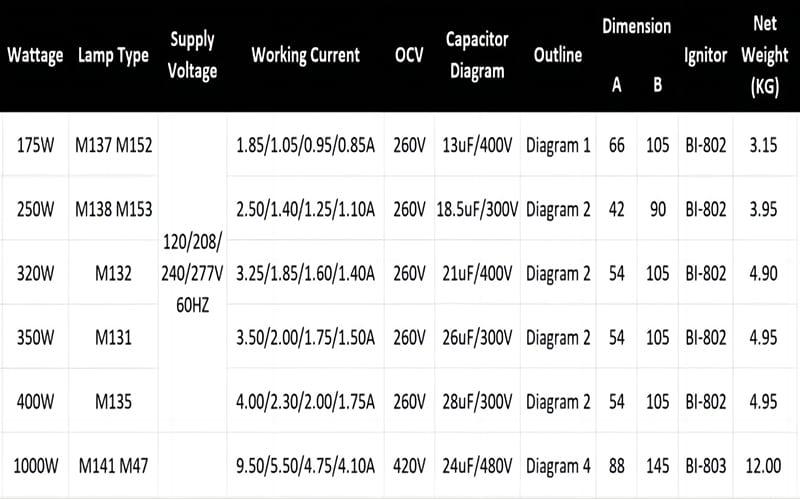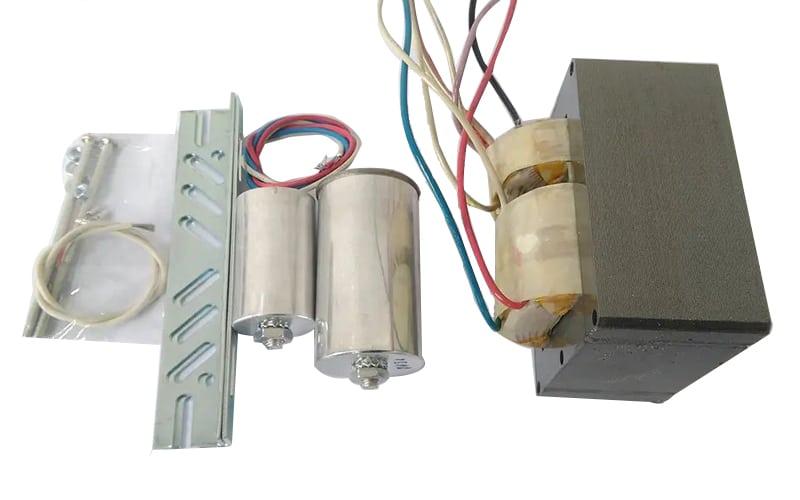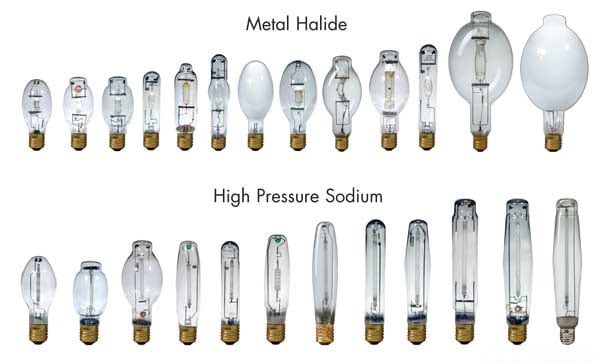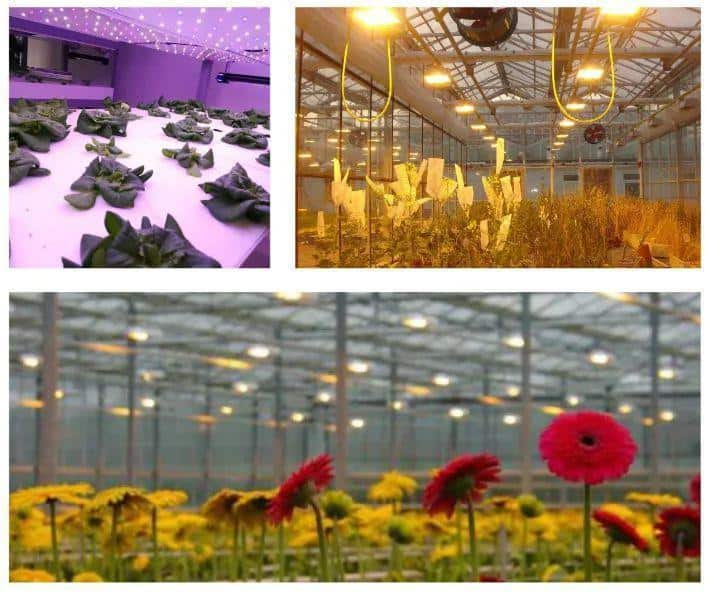Picking the right grow light is important whether you’re growing a small amount of stuff at your house or you’re running a big operation. There are a lot of choices, and it can be hard to decide which one is going to work the best.
Ceramic Metal Halide (CMH) lights have become popular in the last few years because they are full spectrum, efficient, and long-lasting. How do they compare to other common grow light options like High-Pressure Sodium (HPS), Metal Halide (MH), and LED? Each type has its own good and bad things.
We’re going to look at how CMH lights compare to HPS, MH, and LED grow lights. Then you can decide which one is right for you.
What Are CMH Grow Lights?
Ceramic Metal Halide (CMH) grow lights, also known as Light Emitting Ceramic (LEC), are a type of high-intensity discharge (HID) lighting system. They work similarly to traditional Metal Halide lights but use a ceramic arc tube rather than a quartz one, which allows for better color rendering and a fuller light spectrum. This makes CMH lights highly effective for indoor growing.
Key Features of CMH Grow Lights:
- Full-Spectrum Light: CMH lights offer a well-balanced spectrum that includes ultraviolet (UV) and infrared (IR) light. This closely mimics natural sunlight, making them suitable for both the vegetative and flowering stages of plant growth.
- Energy Efficiency: CMH lights produce more lumens per watt than traditional HPS or MH lights, making them more energy-efficient.
- Durability: These lights can last up to 24,000 hours, providing a long lifespan and requiring fewer replacements compared to other HID lighting options.
CMH grow lights are favored by many indoor gardeners and commercial growers because they deliver a balanced spectrum of light, supporting healthy growth in plants from start to finish.
CMH vs. HPS (High-Pressure Sodium) Grow Lights
Light Spectrum
CMH and HPS lights differ significantly in their light spectrum.
- CMH: CMH lights offer a balanced, full-spectrum light that mimics natural sunlight. This spectrum includes both blue and red wavelengths, making them effective for both the vegetative and flowering stages of plant growth. Additionally, CMH lights include UV and IR light, which contribute to better resin production and overall plant health.
- HPS: HPS lights, on the other hand, emit mostly red and orange light, making them particularly effective for the flowering stage of growth. However, because they lack blue light, which is necessary for the vegetative phase, many growers supplement HPS systems with additional lighting to support early plant development.
Energy Efficiency
- CMH: CMH lights are more energy-efficient than HPS lights. They provide more lumens per watt, which means more light is available for plant growth with less energy consumption.
- HPS: HPS lights are less efficient than CMH, though they are still favored for large-scale flowering operations due to their high output of red light. However, they consume more power for the light they produce, leading to higher energy costs over time.
Heat Output
- CMH: CMH lights run cooler than HPS, making them easier to manage in smaller or confined indoor grow setups. This reduced heat output helps maintain a stable growing environment and lowers the need for extensive cooling systems.
- HPS: HPS lights produce a significant amount of heat, which can stress plants if the growing space is not properly ventilated. Excessive heat may require additional cooling systems, increasing operational costs.
Lifespan
- CMH: CMH grow lights generally have a lifespan of up to 24,000 hours, meaning they last longer and require fewer replacements.
- HPS: HPS lights typically last between 10,000 and 16,000 hours, which is shorter than CMH lights, leading to more frequent replacements and higher maintenance costs.

CMH vs. MH (Metal Halide) Grow Lights
Light Spectrum
The key difference between CMH and MH lights lies in the light spectrum they provide.
- CMH: CMH lights offer a full spectrum of light, including both blue and red wavelengths. This makes them suitable for use throughout the entire growth cycle, from vegetative to flowering stages. The inclusion of UV and IR light also helps promote plant health and boosts overall growth.
- MH: MH lights primarily produce blue light, which is ideal for the vegetative phase of plant growth but less effective for the flowering stage. As a result, MH lights often need to be supplemented or swapped out for HPS lights during the flowering period.
Energy Efficiency
- CMH: CMH lights are more energy-efficient than MH lights, providing more usable light per watt of electricity consumed.
- MH: MH lights are less efficient, consuming more power for the same amount of light compared to CMH lights. This can lead to higher operational costs over time.
Heat Output
- CMH: CMH lights generate less heat than MH lights, making them more suitable for indoor growing environments where heat management is important.
- MH: MH lights produce a lot of heat, which can make them difficult to manage in smaller grow setups. This heat often requires additional cooling systems to prevent plant stress or overheating.
Lifespan
- CMH: With a lifespan of up to 24,000 hours, CMH lights last longer than traditional MH lights.
- MH: MH lights typically last between 6,000 and 15,000 hours, meaning they need to be replaced more frequently than CMH lights, adding to long-term costs.

CMH vs. LED (Light Emitting Diode) Grow Lights
Light Spectrum
Both CMH and LED lights are known for their full-spectrum capabilities, but there are some key differences.
- CMH: CMH lights provide a fixed full-spectrum light, which includes UV and IR wavelengths. This spectrum is ideal for both vegetative and flowering stages, but it cannot be adjusted or customized.
- LED: LED lights offer a highly customizable light spectrum, allowing growers to adjust the wavelengths to meet the specific needs of their plants during different growth stages. This level of control makes LEDs particularly appealing for precision growing.
Energy Efficiency
- CMH: CMH lights are energy-efficient compared to HPS and MH, but they are still less efficient than LEDs.
- LED: LEDs are the most energy-efficient option among grow lights. They consume significantly less power than both CMH and HID lights while providing a high light output, making them ideal for both home and commercial grows focused on energy savings.
Heat Output
- CMH: CMH lights produce less heat than traditional HID systems but still more than LEDs. While CMH lights can be managed with ventilation systems, they do require more heat management compared to LEDs.
- LED: LED lights produce very little heat, making them perfect for small, enclosed grow spaces where excessive heat could be an issue. This also reduces the need for extra cooling systems, saving energy and lowering costs.
Lifespan
- CMH: CMH lights typically last around 24,000 hours, offering a durable option for long-term growing.
- LED: LEDs have the longest lifespan of any grow light, often lasting between 50,000 and 100,000 hours. This extended lifespan reduces maintenance and replacement costs over time, making LEDs a cost-effective solution in the long run.

Which Grow Light is Best for Your Needs?
Commercial Growers:
- CMH: CMH lights are ideal for commercial growers who need a balance between energy efficiency, spectrum quality, and affordability. They are versatile enough to support both vegetative and flowering stages, making them a great all-around option.
- HPS: Still widely used for large-scale flowering operations due to their strong red spectrum output, but HPS lights require more cooling and energy, which can increase costs over time.
- MH: Primarily suited for the vegetative phase, but not ideal for full-cycle growing. Commercial growers often use MH alongside HPS lights, but this setup is less efficient than using CMH or LED lights.
- LED: LEDs are becoming the preferred choice for commercial growers due to their energy savings, long lifespan, and the ability to precisely control the light spectrum for different growth stages. Though they require a higher initial investment, they offer long-term savings.
Home Growers:
- CMH: CMH lights are a great option for home growers who want full-spectrum lighting but are conscious of energy efficiency. They provide a balanced light that supports all stages of plant growth.
- HPS/MH: These lights are useful in specific growth stages (HPS for flowering, MH for veg), but their higher heat output and energy consumption make them less practical for smaller home setups.
- LED: LEDs are ideal for home growers due to their low heat output, energy savings, and customizable light spectrum. While they are more expensive upfront, the energy savings and long lifespan make them a great investment for home growers.
Conclusion
CMH grow lights are a really good mix of full-spectrum light, energy efficiency, and how long they last. They are a great choice for both the vegetative and flowering stages of plant growth. But if you want the most energy-efficient light and the most control over the light spectrum, LED grow lights are the best.


